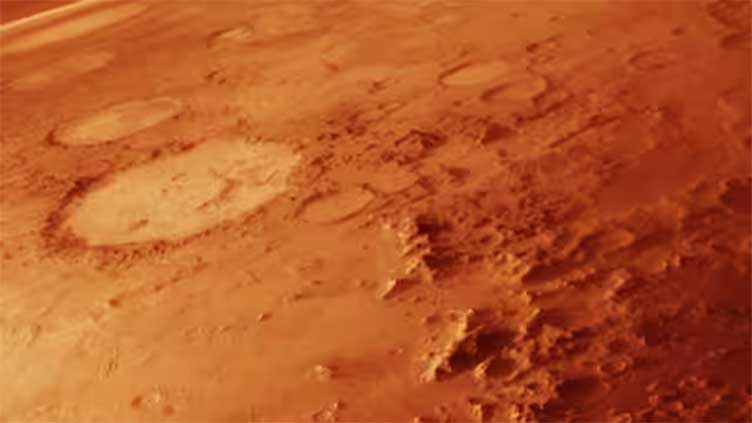Life might thrive under frozen water on Mars, study says

Technology
It proposes that microbes could find a potential home under the ice
(Web Desk) - Life on Mars may thrive under the frozen water on the planet's surface, according to a new Nasa study.
It proposes that microbes could find a potential home under the ice, similar to what has been observed on Earth.
The study authors used computer modelling to show that photosynthesis is possible in shallow pools of meltwater under the surface of the ice based on the amount of sunlight that can shine through it.
On Earth, pools of water within ice have been found to harbour algae, fungi, and microscopic cyanobacteria, and photosynthesis powers all of them.
Lead author of the study, Aditya Khuller of NASA's Jet Propulsion Laboratory in Southern California, says that "Martian ice exposures are probably one of the most accessible places we should be looking" for life in the universe today.
The paper has been published in Communications Earth & Environment.
Mars has two types of ice - frozen water and frozen carbon dioxide. The team studied water ice which formed during a series of Martian ice ages in the past million years. Snow mixed with dust fell onto the surface and later solidified into ice, still carrying specks of dust.
The researchers say that dust particles are key to explaining how subsurface pools of water could form within ice when exposed to the sun.
The darker portions of dust absorb more sunlight which causes the ice to warm up and melt up to a few feet below the surface.
However, several scientists studying Mars do not believe that ice can melt on Mars because of the planet's thin, dry atmosphere.
Ice is believed to directly turn into gas on the Martian surface. But this is not likely true for the region below the dusty snowpack or glacier.
Dust within ice on Earth creates small cavities when windblown dust lands there. They absorb sunlight and melt farther into the ice.
Once far enough from the sun's rays, they stop sinking. There is still enough warmth to create a pocket of meltwater around them. These pockets can nourish a thriving ecosystem for simple lifeforms.
"This is a common phenomenon on Earth," said co-author Phil Christensen of Arizona State University in Tempe.
"Dense snow and ice can melt from the inside out, letting in sunlight that warms it like a greenhouse, rather than melting from the top down."
The new paper suggests that on Mars, dusty ice lets in enough light for photosynthesis to occur as deep as nine feet below the surface.
The upper layers of ice act as a shield and prevent the shallow subsurface pools of water from evaporating and also protect them from harmful radiation.
This becomes important because Mars lacks a protective magnetic field to shield it from both the sun and radioactive cosmic ray particles.



